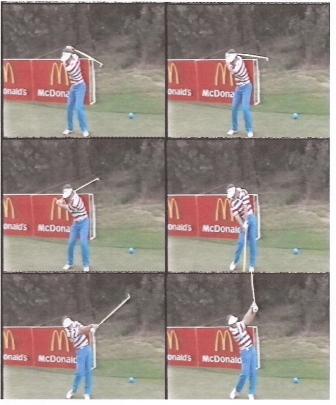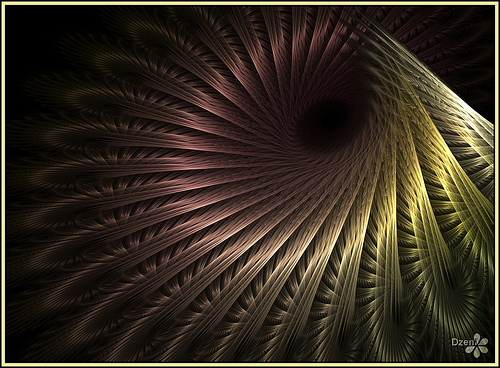On Bom’s request I will try and write down what I used to think of when I was swinging the club in my younger days.
I really feel that over time tuition took away much of instinctual attributes and the quest to be perfect as regarded in the eyes of coaching and swing planes and theories took away many positive pieces of my swing that helped me achieve a high standard just by my own instincts and feel early on.
I will add a few pics from time to time to show the differences and how these things altered my swing
Growing up I based my swing on my childhood idol, Greg Norman. watching him swing and actually being able to get up close and personal with Greg inside the ropes helped me achieve what my younger swing was based on.
-
A big wide takeaway. I watched Norman, and Nicklaus talked about it also, and noticed he had a wide extension away from the ball. I liked this feeling. It allowed me to create a big wide arc, going back creating and storing power that I would then get rid of later on as I approached impact
-
I really felt Norman planted his feet in the ground at address and basically dug himself into the ground and even lowered his center of gravity downwards before he took the club away on his backswing. I did this also. Steel spikes, incredibly now missing from the game, allowed this digging into the turf to happen much easier. They say the swing starts from the ground up, so this rooting to the ground really helped set up a base that allowed huge power to be produced later in the swing without losing balance. It also allowed me traction to hold against the forces I was creating with my ultra wide backswing
-
because I didn’t really break my wrists until I had started transition, i was really creating big angles in my swing. Now, these angles had to be gotten rid of somewhere. In my case the big wide take away loaded the angles and allowed my arms and hands to drop down whilst the clubhead stayed up and dropped behind me some. So by the time my hands were near impact, my clubhead was still way up near my shoulder, creating a huge lag in the swing and power stored up ready to be unleashed.
-
I know knew i had to pour on the power at impact, so I released my hands as hard as i could through the impact zone. The club head instinctively caught up because I waited so long to provide the force to my swing. there was never any chance I could hit too early with the backswing I was using.
-
Because I had such forceful ground forces in place by what i mentioned above, I now had the resistance in place against this power I was producing through the hitting area. The traction with the ground allowed me to fire my pivot hard along with my hands so I never just flicked at the ball with my hands. my hands were firing but the pivot was trying to outrace it.
-
I always got full extension to my finish (to PV5 as Lag calls it) because of the power and force i was providing to the club late in the swing and with my feet firmly gripping. In fact my right foot used to give out and slide just like Norman’s did although I didn’t really know it or try to do it. It was just a chain reaction that made it happen. from there I could drop or swivel or fold into whatever felt comfortable as a finishing pose and the swing was over
What thoughts do you have of that line of thinking Bom?.. obviously it is not for everyone, because one thing led to another and you have to be able to resist and work with and against all those forces that are occurring, but somehow I was able to do it so it worked well for me
i will add more as we move along.

